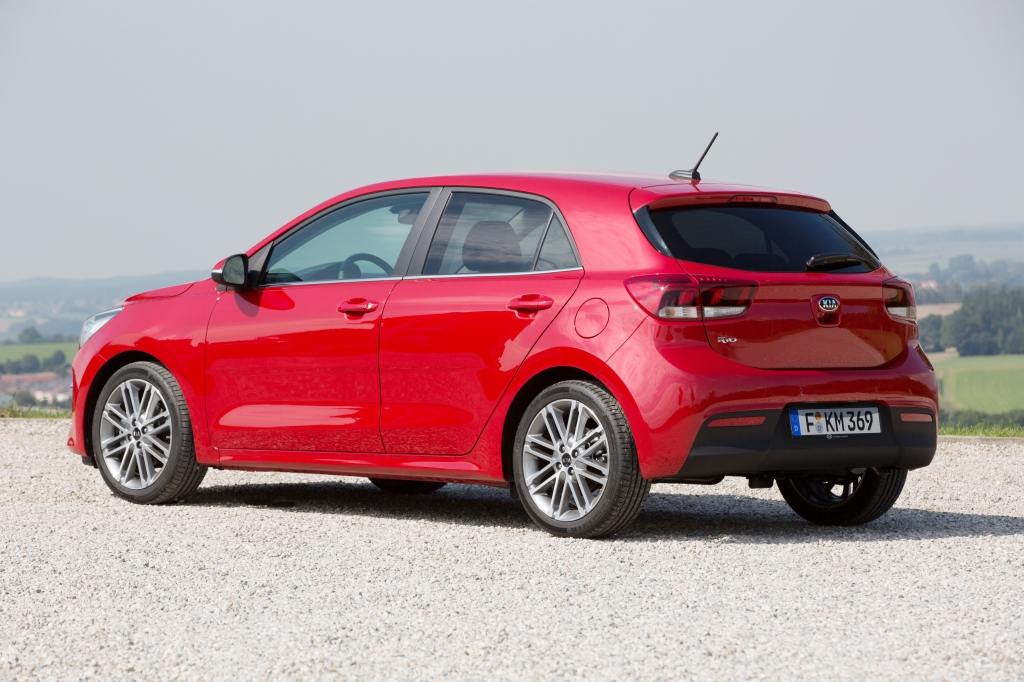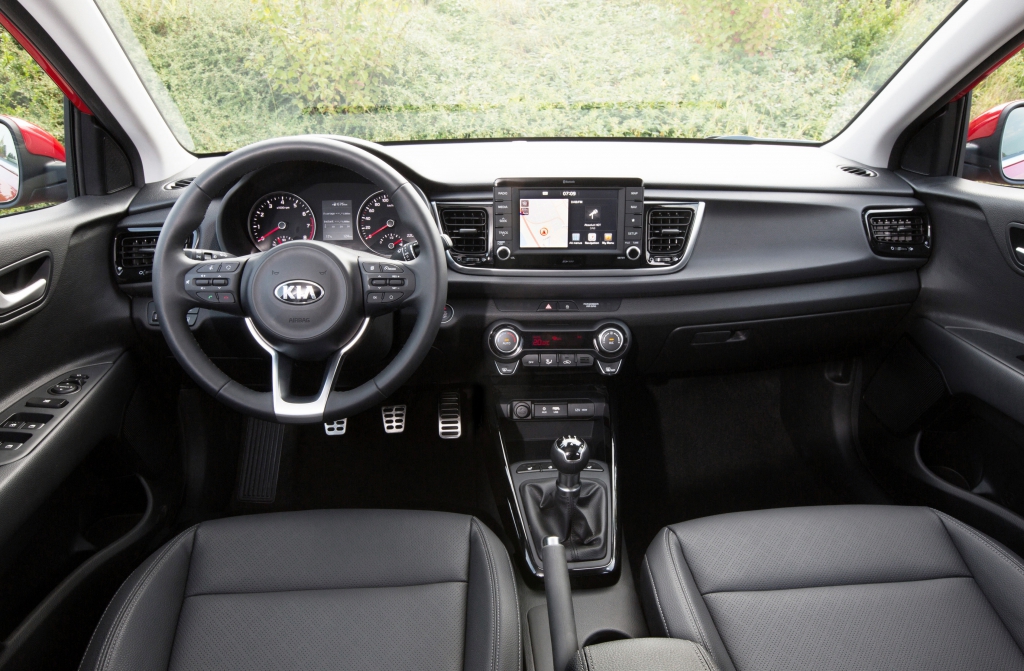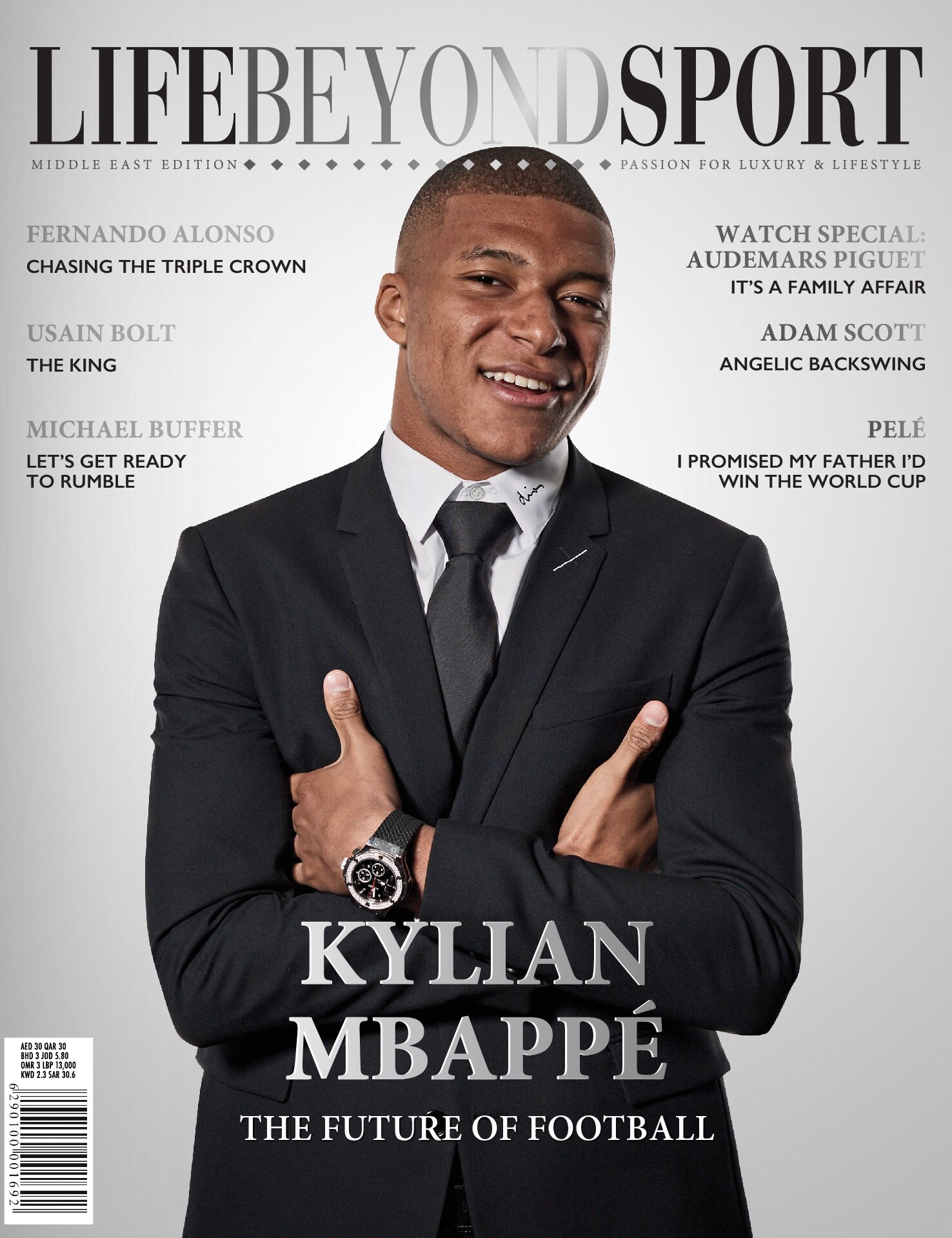Now in its fourth generation, the new Rio stands out thanks to its progressive design, class-leasing practicality and safety technologies, new connectivity features and more engaging ride and handling.

Exterior design
At the front, the Rio wears the latest evolution of Kia’s ‘tiger-nose’ grille, now thinner in height and wider across the front of the car, with a gloss black grille mesh and surround. The grille is integrated with the newly-designed bi-function headlamps, more sculpted for a sharper look, and featuring a new U-shaped LED daytime running light signature. The Rio’s front fog lamp surrounds are moved outwards and upwards in the front bumper compared to their position on the third-generation model, adding greater visual width to the front of the car for a stronger overall look. The longer bonnet features bracket-shaped creases that run down from the base of the A-pillars to the grille and headlamps.
In profile, the fourth-generation Rio’s lengthened, more balanced stance is achieved with a long bonnet and longer front overhang, a 10 mm longer wheelbase (up to 2,580 mm), a thinner, more upright C-pillar, and a shorter rear overhang. Overall, the new car is 15 mm longer than its predecessor, at 4,065 mm in length, and 5 mm lower (now 1,450 mm tall). Straight, clearly-defined lines run down the full length of the car’s shoulder and along its doors, further stretching the appearance of the car for a more confident look.

The rear section of the Rio is now more upright, with a near-vertical rear windscreen. The straight line that runs from the grille, through the headlamps and along the top of the doors, continues around the back of the car, paired with thinner, more sculpted rear lamps, which now feature a new arrow-shaped LED light signature. Like the wider-looking ‘face’ of the car, the rear design of the new Rio gives the car a stronger overall appearance.
Interior design
Modern cabin with new floating HMI
The new Kia Rio features a modern new cabin, with sculptural forms and a more ergonomic layout than its predecessor. The interior has also been designed to accommodate the Rio’s new range of technologies.
Like the exterior, straight lines running the width of the dashboard characterise the shape of the interior, giving the cabin a wider appearance and increasing the sense of space for occupants. As well as long, lateral lines that govern the shape of the dashboard, horizontal vents further add to the visual width of the cabin, replacing the vertical vents of the third-generation model. Gloss black trim lines the central section of the dashboard.
The dashboard itself is now angled towards the driver, a layout which provides the car with a sportier, more driver-focused design and a more premium character. At the centre of the dashboard is a ‘floating’ HMI (human-machine interface), available with a high-resolution touchscreen. Below, the driver-oriented centre console features fewer buttons, with more ergonomic, concave switches and rotator dials below to control the heating and ventilation.

The new Rio is available with a choice of black or grey cloth seat upholstery, or with black or grey artificial leather. A ‘Red Pack’ for the Rio gives buyers black with red artificial leather-trimmed seats throughout the cabin.
New technologies further boost the appeal of the Rio’s cabin. Designed to improve comfort and convenience for owners, the new model is available with keyless entry and ignition, heated seats and steering wheel, rain-sensing windscreen wipers, and automatic headlamps. Buyers can also specify Automatic Cruise Control, with a speed limiter, and Rear Park Assist with a rear view camera (see ‘Safety’ for more information on the Rio’s new safety systems).
Careful thought has been given to improving the cabin’s isolation from wind, road and engine noise. New dashboard soundproofing materials have been adopted to reduce engine noise levels in the front of the cabin, while a stiffer front subframe minimises vibrations from poor road surfaces. Changes to the exterior further enhance interior refinement, with the fourth-generation Rio adopting new front wheel air deflectors, a full under-body cover and vertical ‘blades’ extending downwards from the boot spoiler, each serving to reduce wind noise and aerodynamics.
www.kia-uae.com
.jpg) Life Beyond Sport magazine is a pioneering publication that breaks through the traditional barriers of men’s lifestyle magazines by smoothly combining a man’s love of sport with his passion for the finer things in life. The magazine contains a range of features, interviews and photo-shoots that provide an exclusive insight into the sportsman’s lifestyle. Only in Life Beyond Sport will you find the biggest names from the worlds of Football, Tennis, Formula 1, Golf, Polo and more.
Life Beyond Sport magazine is a pioneering publication that breaks through the traditional barriers of men’s lifestyle magazines by smoothly combining a man’s love of sport with his passion for the finer things in life. The magazine contains a range of features, interviews and photo-shoots that provide an exclusive insight into the sportsman’s lifestyle. Only in Life Beyond Sport will you find the biggest names from the worlds of Football, Tennis, Formula 1, Golf, Polo and more.












































